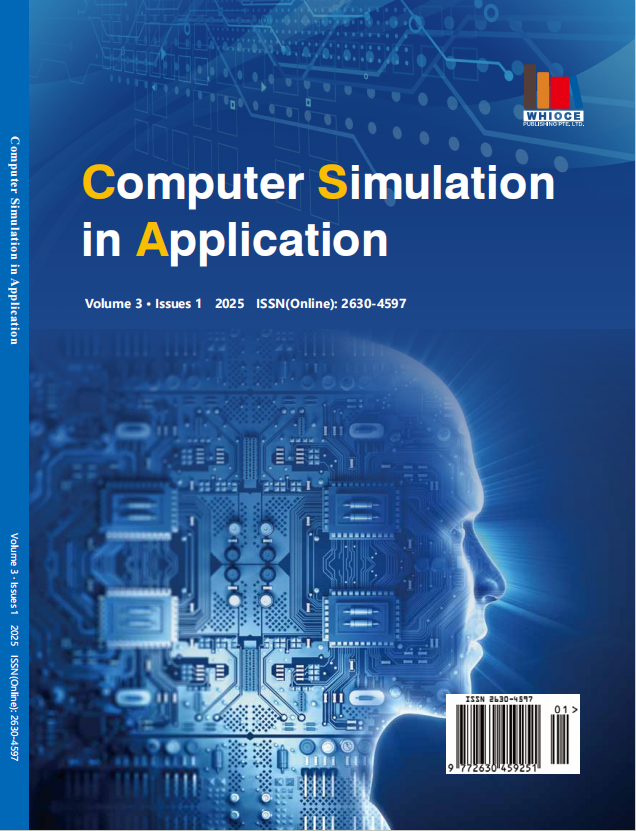Deep Learning Models for Multi-class Pneumonia Detection in Chest X-rays: A Comparative Study of VGG16, MobileNet, and ResNet152
DOI:
https://doi.org/10.18063/csa.v3i1.916Keywords:
Time series prediction, Material flow analysis, TCN-GRU model, machine learningAbstract
Pneumonia is a major global health threat, with diagnosis becoming increasingly complex due to emerging respiratory viruses such as SARS-CoV-2. This study explores the use of deep learning models—VGG16, MobileNet, and ResNet152—for classifying chest X-ray images into three categories: COVID-19, viral pneumonia, and normal. Models were fine-tuned using transfer learning on a retrospective dataset collected between 2010 and 2021 at a medical center in Guangzhou, China. The dataset contains 5,863 X-ray images (JPEG format), obtained from routine clinical care categorized into pneumonia and normal classes, organized into train, test, and validation folders. Data augmentation techniques, including rotation, scaling, translation, shearing, and flipping, were applied to improve model robustness. ResNet152 achieved the highest accuracy (89%) and showed perfect precision and recall in detecting COVID-19 and viral pneumonia cases, though its performance on normal cases was lower. The superior performance of ResNet152 is attributed to its deep residual learning architecture, which enables the extraction of complex image features while mitigating gradient vanishing. These findings demonstrate the potential of AI-driven systems in supporting pneumonia diagnosis and emphasize the importance of using larger, balanced datasets for improving diagnostic performance in real-world clinical settings, particularly in low-resource environments.
References
Mani C S. Acute pneumonia and its complications[J]. Principles and practice of pediatric infectious diseases, 2017: 238.
Abdelrahman Z, Li M, Wang X. Comparative review of SARS-CoV-2, SARS-CoV, MERS-CoV, and influenza a respiratory viruses[J]. Frontiers in immunology, 2020, 11: 552909.
Garg M, Prabhakar N, Kiruthika P, et al. Imaging of pneumonia: an overview[J]. Current Radiology Reports, 2017, 5: 1-14.
Miotto R, Wang F, Wang S, et al. Deep learning for healthcare: review, opportunities and challenges[J]. Briefings in bioinformatics, 2018, 19(6): 1236-1246.
Siddiqi R, Javaid S. Deep learning for pneumonia detection in chest x-ray images: A comprehensive survey[J]. Journal of imaging, 2021, 10(8): 176.
Simonyan K, Zisserman A. Very deep convolutional networks for large-scale image recognition[J]. arXiv preprint arXiv:1409.1556, 2014.
Howard A G, Zhu M, Chen B, et al. Mobilenets: Efficient convolutional neural networks for mobile vision applications[J]. arXiv preprint arXiv:1704.04861, 2017.
He K, Zhang X, Ren S, et al. Deep residual learning for image recognition[C]//Proceedings of the IEEE conference on computer vision and pattern recognition. 2016: 770-778.
Salehi A W, Khan S, Gupta G, et al. A study of CNN and transfer learning in medical imaging: Advantages, challenges, future scope[J]. Sustainability, 2023, 15(7): 5930.
Kundu R, Das R, Geem Z W, et al. Pneumonia detection in chest X-ray images using an ensemble of deep learning models[J]. PloS one, 2021, 16(9): e0256630.
Bai W, Suzuki H, Qin C, et al. Recurrent neural networks for aortic image sequence segmentation with sparse annotations[C]//Medical Image Computing and Computer Assisted Intervention–MICCAI 2018: 21st International Conference, Granada, Spain, September 16-20, 2018, Proceedings, Part IV 11. Springer International Publishing, 2018: 586-594.
Jha D, Riegler M A, Johansen D, et al. Doubleu-net: A deep convolutional neural network for medical image segmentation[C]//2020 IEEE 33rd International symposium on computer-based medical systems (CBMS). IEEE, 2020: 558-564.
Gang L, Haixuan Z, Linning E, et al. Recognition of honeycomb lung in CT images based on improved MobileNet model[J]. Medical physics, 2021, 48(8): 4304-4315.
Roy P, Chisty M M O, Fattah H M A. Alzheimer’s disease diagnosis from MRI images using ResNet-152 Neural Network Architecture[C]//2021 5th International Conference on Electrical Information and Communication Technology (EICT). IEEE, 2021: 1-6.
Yang H, Ni J, Gao J, et al. A novel method for peanut variety identification and classification by Improved VGG16[J]. Scientific Reports, 2021, 11(1): 15756.

